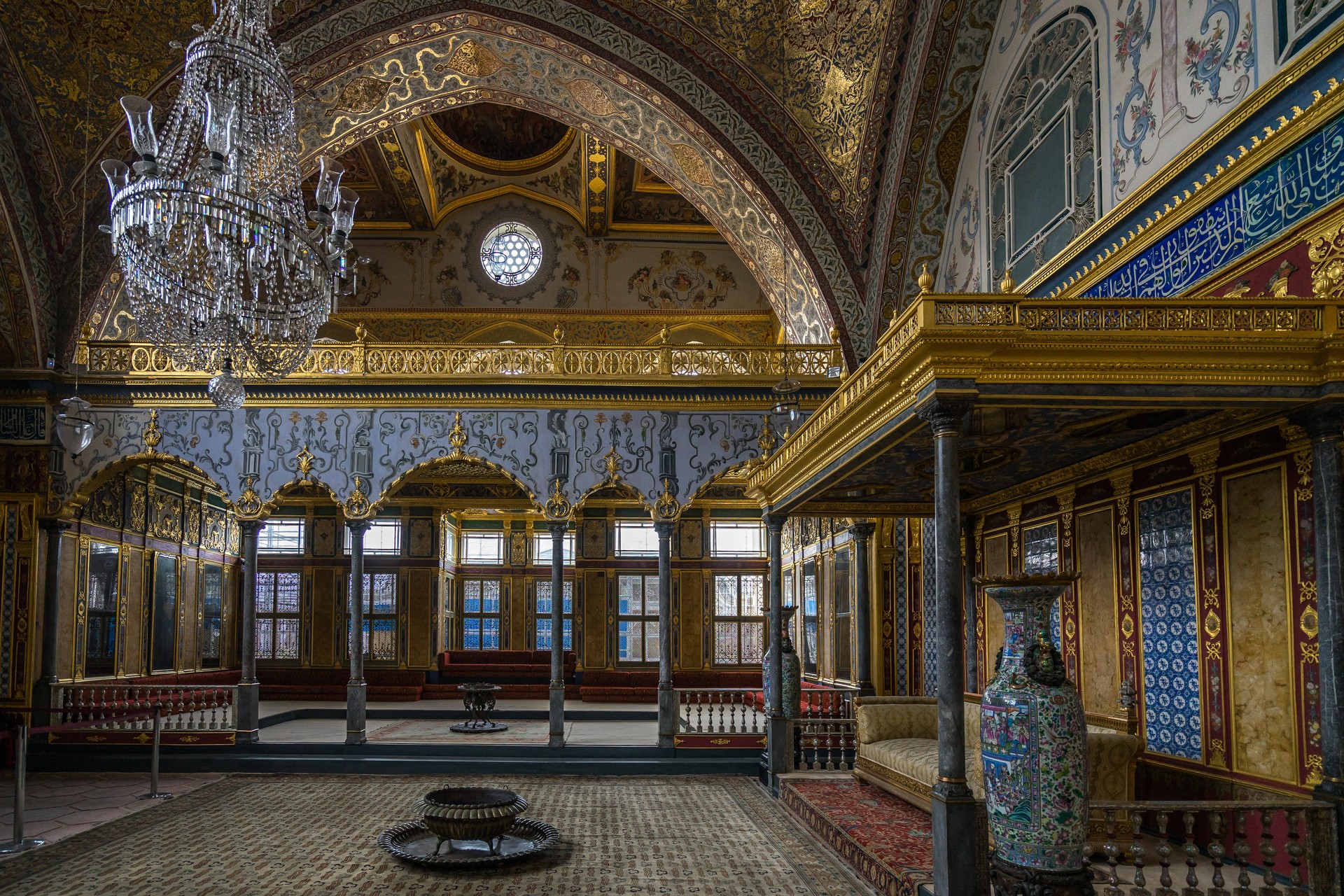
Topkapi Palace, an architectural masterpiece in Istanbul, once served as the residence of Ottoman sultans and the administrative center of the empire.
It is one of Istanbul's mostpopular tourist attractionsand has gained additional fame as the filming location for renowned series like "Muhtesem Yuzyil" (Magnificent Century).
Beyond its majestic exterior, the secrets of Topkapi Palace and fascinating details about the lives of the rulers are still within its walls.
These hidden stories reflect the mystique and cultural significance of the Ottoman era, offering a window into the world of sultans, concubines and imperial traditions.
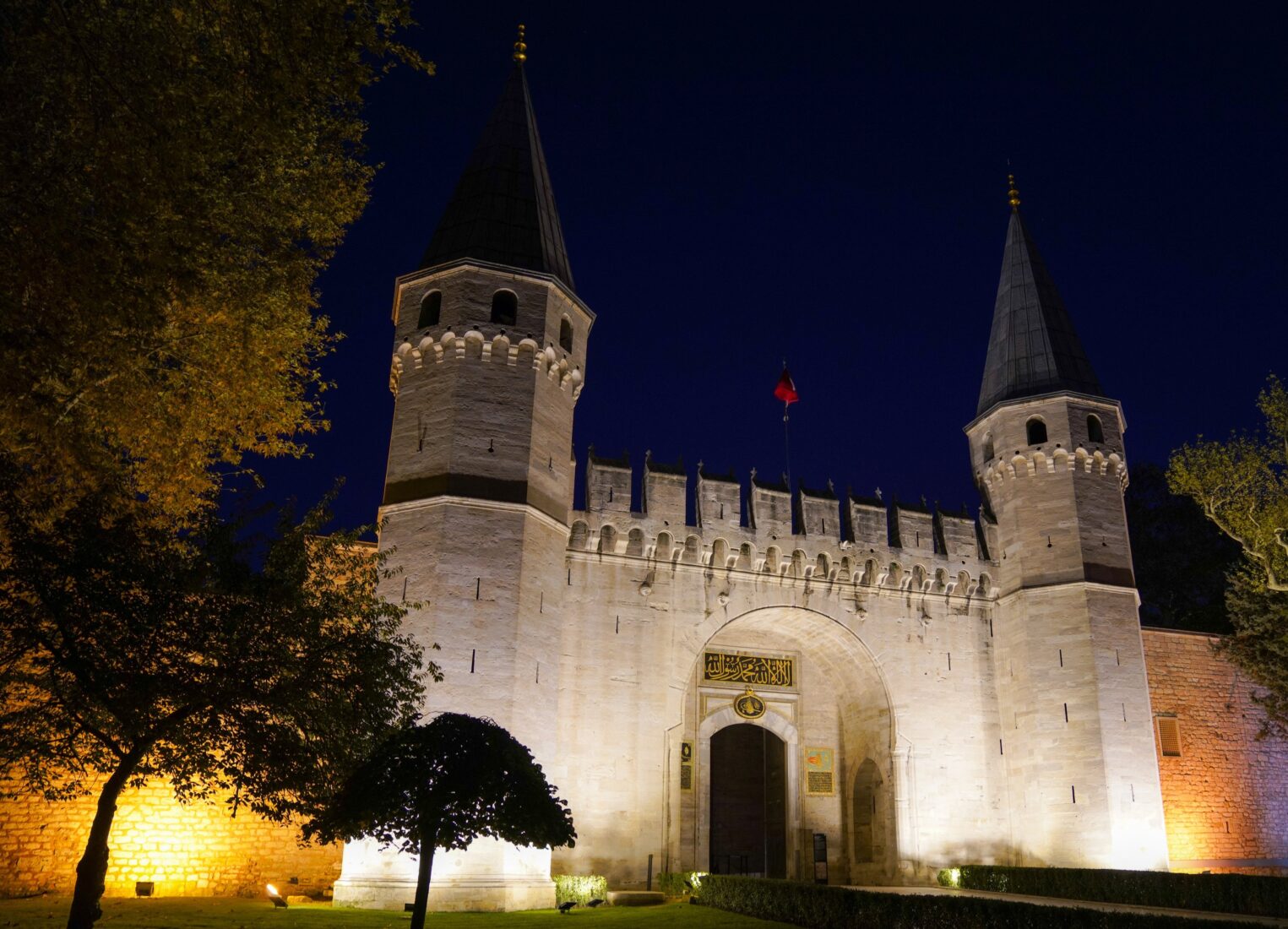
One of the most intriguing aspects of Topkapi Palace is the Sacred Safekeeping Rooms, where even the dust was considered holy. This reverence for dust stems from the belief that every particle within these rooms absorbed the spiritual aura of the sacred relics.
The custodians of these relics observed strict rituals to preserve this sanctity. Before entering the rooms, visitors and palace staff would meticulously wash their hands in a special fountain located at the entrance, ensuring no external dust contaminated the sacred environment. Upon exiting, they repeated the ritual, washing their hands again to prevent the holy dust from leaving the room.
This practice was so deeply ingrained in the palace's traditions that even the smallest amount of dust was never discarded carelessly. Instead, it was collected and respectfully placed in a special area, reflecting the deep spiritual significance attributed to these relics and the space they occupied.
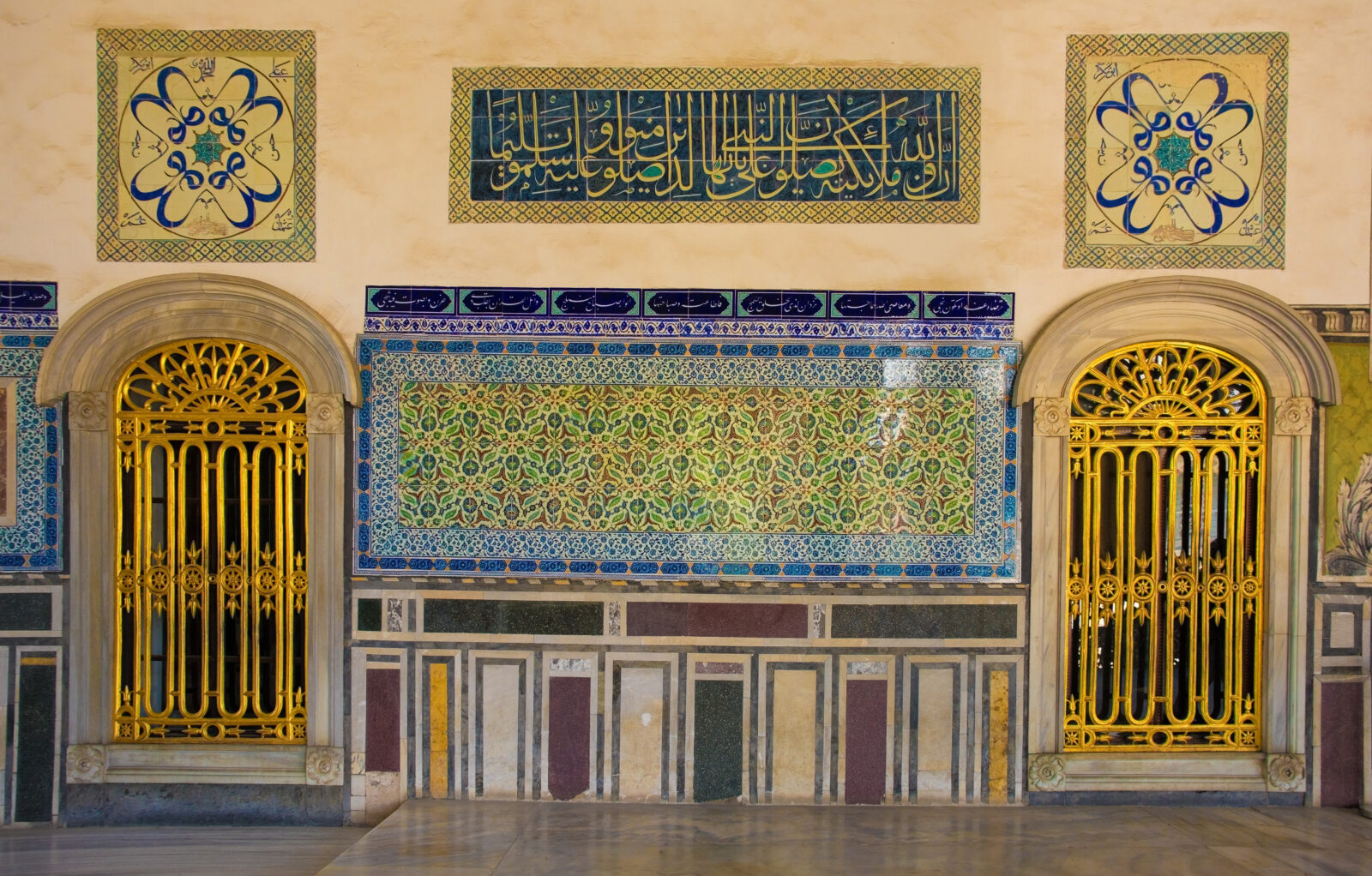
The Has Oda, or Privy Chamber, of Topkapi Palace holds a unique secret tied to the number 40. In this chamber, there were always 39 Enderun students, who were the elite scholars of the Ottoman Empire, chosen for their intelligence and loyalty.
The 40th person, however, was not just any ordinary individual.
This position was reserved for the sultan himself. Although the sultan rarely stayed in the chamber, he was symbolically considered the 40th member.
This tradition showed the sultan’s close, albeit symbolic, connection to the spiritual and educational heart of the empire. The Privy Chamber was not just a place of learning; it was where the most sacred Islamic relics, including Prophet Muhammad’s mantle, were housed.
The number 40 itself carries significant spiritual meaning in Islam, often symbolizing a period of trial, testing, or transformation. Thus, the sultan’s inclusion as the 40th member reflected his role as the spiritual and temporal leader of the empire.
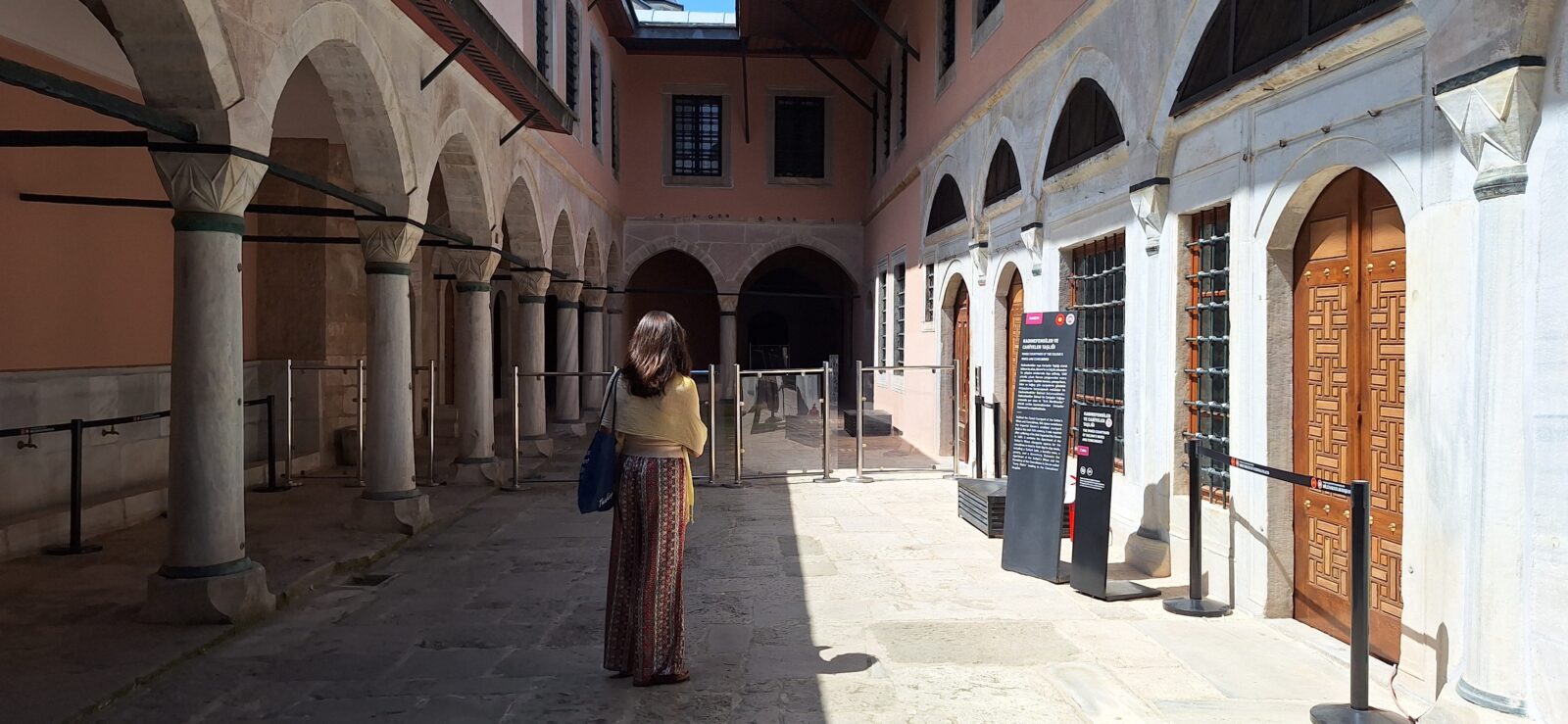
Topkapi Palace is home to an array of mystical objects, among which the tilsimli gomlekler (enchanted shirts) stand out. These garments were not just ordinary clothing but were believed to possess protective and healing powers.
Each shirt was inscribed with Quranic verses, prayers, and intricate symbols, meticulously calculated using the ancient system of ebced (a form of Arabic numerology). The process of creating these shirts was elaborate and required the skills of master craftsmen, astrologers, and religious scholars.
They were worn by sultans and other high-ranking individuals during battles or periods of illness to ward off evil, provide protection, or ensure victory. The shirts were so revered that they were kept in the palace’s treasury and only brought out for special occasions.
Some of these shirts remain on display in the palace today, still carrying an air of mystery and intrigue, as the full extent of their power and the secrets of their inscriptions have yet to be fully deciphered.
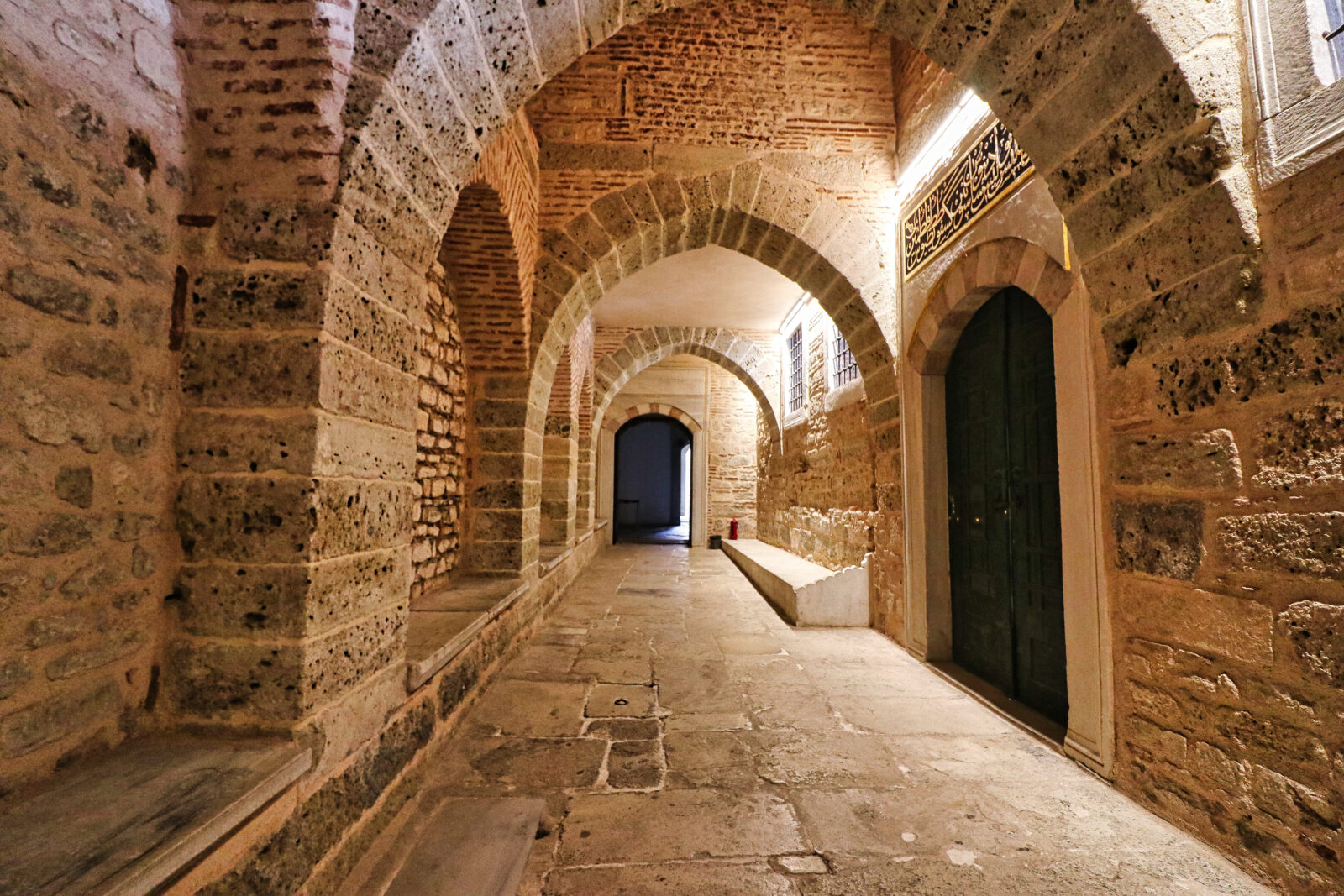
Beneath the opulent Harem of Topkapi Palace lies a network of passageways, shrouded in mystery and speculation. These subterranean corridors are believed to have served multiple purposes, from secret escape routes to hidden meeting places.
Some theories suggest that these tunnels connected the palace to various strategic points across Istanbul, including the Bosphorus, Hagia Sophia and even distant parts of the city like Beyazit. The purpose of these passageways remains one of the palace’s most enduring mysteries.
Some historians believe they were used by the sultans to move unseen between different parts of the city, while others speculate they were built as escape routes during times of siege or invasion.
The passageways have also been linked to various legends, including stories of treasure hidden deep within the tunnels and tales of ghostly apparitions that haunt the underground labyrinth.
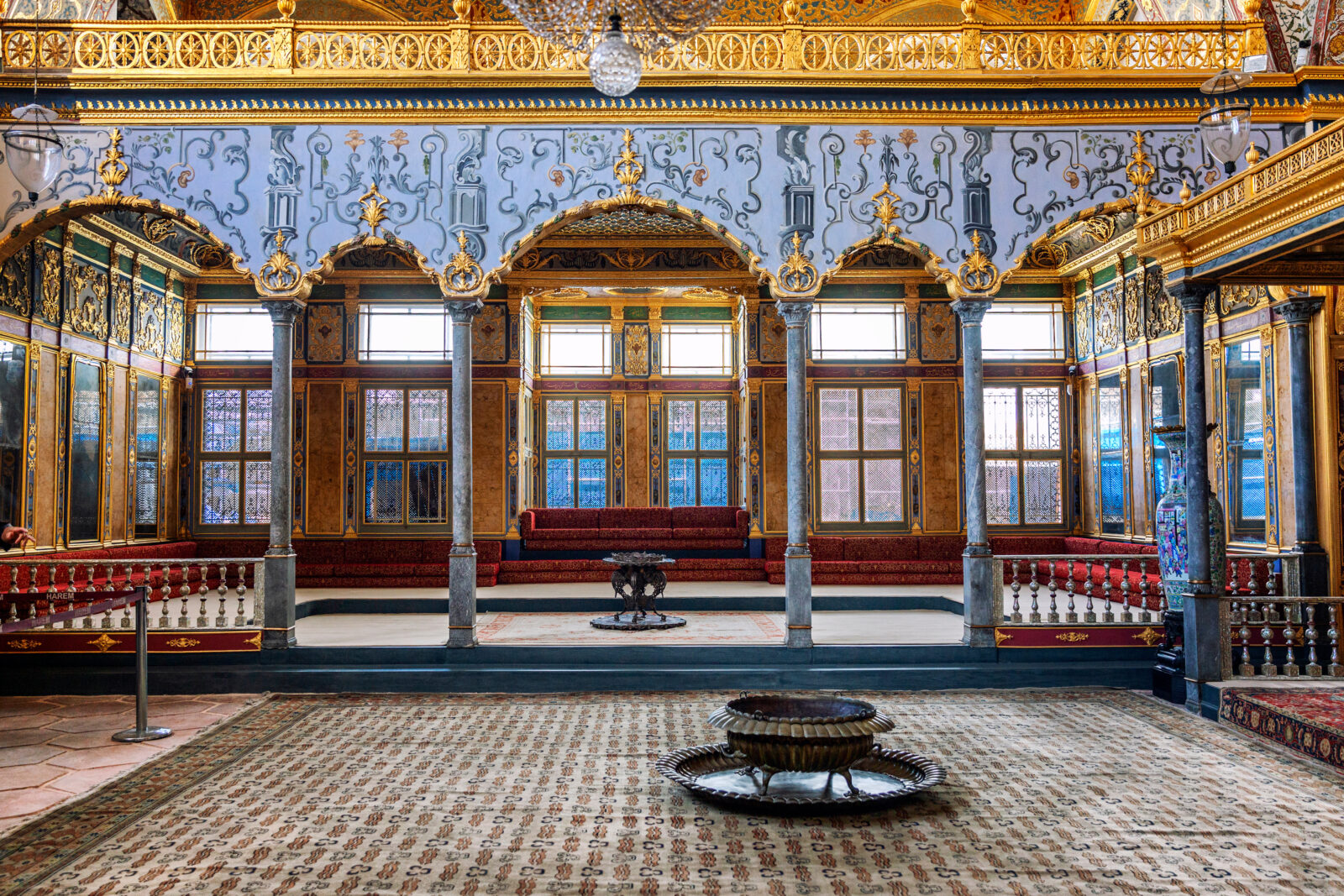
Throughout Topkapi Palace, the color red appears in various forms, from textiles to architectural details. This color was not chosen at random; it held deep symbolic meaning in the Ottoman Empire.
Red was associated with power, authority, and protection. It was the color of the sultan’s throne, the canopy under which he sat, and the robes of high-ranking officials. In the Divan Hall, where the empire’s most critical decisions were made, red was prominently featured to signify the weight and seriousness of the matters discussed there.
The choice of red was also tied to the empire’s military might, symbolizing the blood of martyrs and the courage of soldiers.
This connection to power and protection extended even to the garments worn by the sultan and his closest advisors, who often donned red robes during important ceremonies and battles.
The pervasive use of red in the palace’s decor was a constant reminder of the sultan’s authority and the empire’s strength, both to those who lived within its walls and to the visitors who passed through its gates.
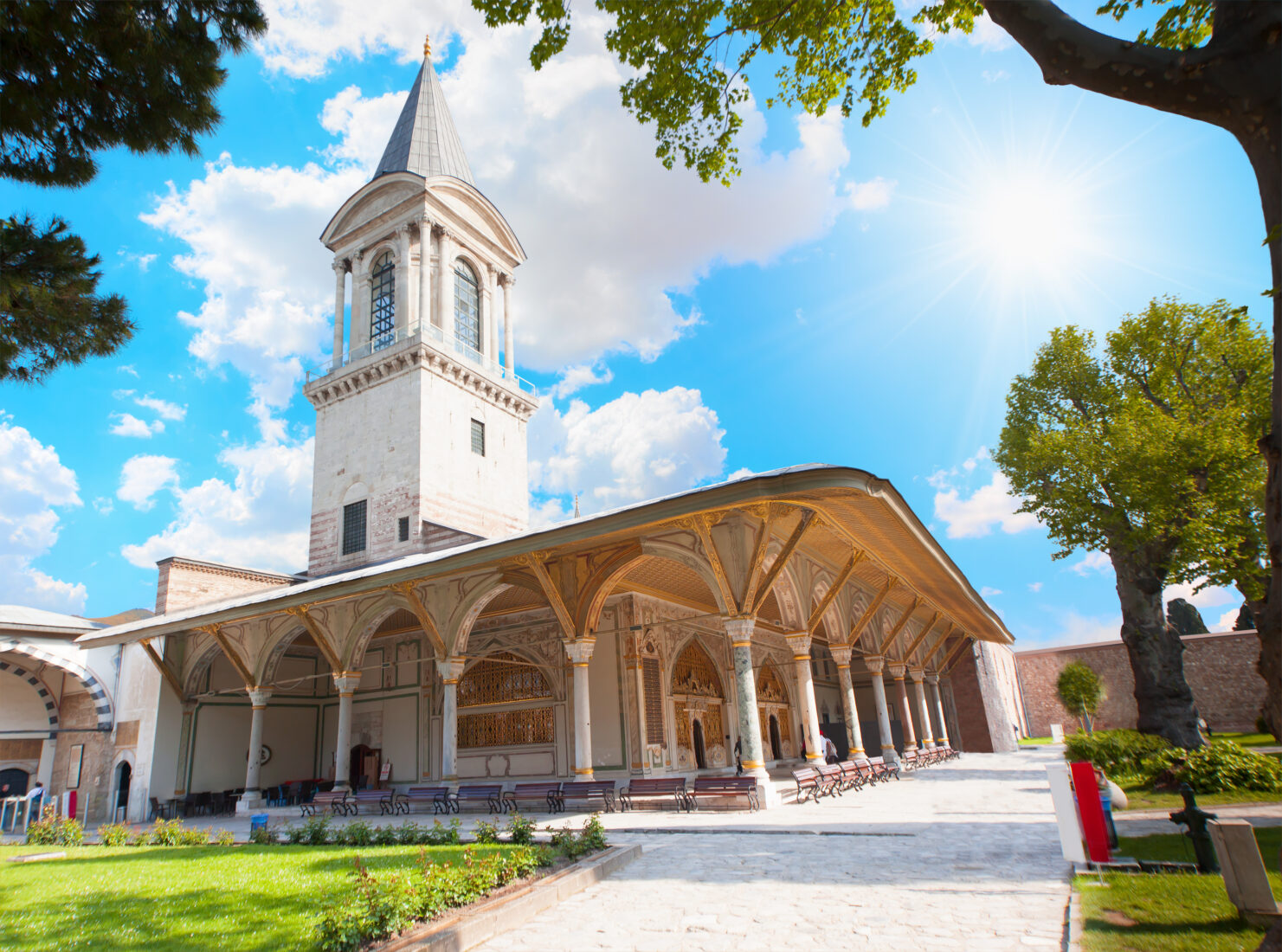
One of the lesser-known but fascinating traditions of Topkapi Palace was the Baklava Alayi (Baklava Procession), a ceremonial event that took place during the holy month of Ramadan.
On the 15th day of Ramadan, the sultan would order trays of baklava to be prepared in the palace kitchens. These trays were then carried in a grand procession from the kitchens to the barracks of the Janissaries, the elite military corps of the Ottoman Empire.
The Baklava Alayi was not just about distributing a sweet treat; it was a deeply symbolic act that reinforced the bond between the sultan and his soldiers.
The procession was meticulously organized, with each tray carried by a soldier, and the entire event was accompanied by music and fanfare.
The Janissaries received the baklava with great reverence, as it was seen as a gesture of the sultan’s favor and a symbol of the unity between the ruler and his army. This tradition symbolized the importance of loyalty and service in the Ottoman military, and the baklava itself became a symbol of the sultan’s benevolence and the empire’s prosperity.
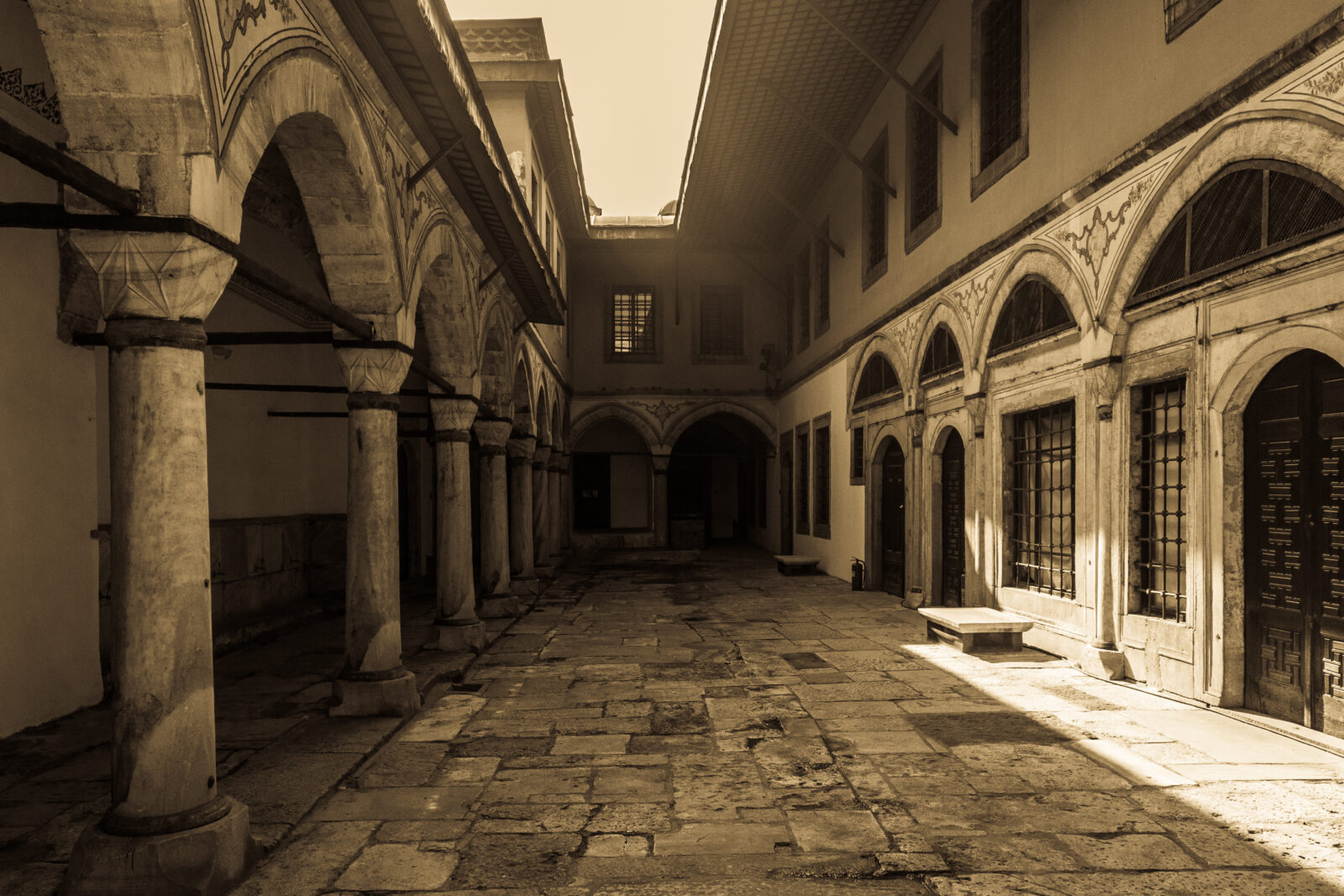
Ibrahim the Mad (1615-1648), one of the most infamous sultans of the Ottoman Empire, left behind a legacy of chaos and terror within the walls of Topkapi Palace. After spending 22 years in isolation, imprisoned by his brother, Sultan Murad IV, Ibrahim’s mental state deteriorated severely.
Upon ascending the throne, his erratic behavior quickly became apparent.
One of the most shocking episodes of his reign occurred when he ordered his entire harem of 280 women to be tied in sacks and thrown into the Bosphorus, a decision driven by his paranoia and instability.
This act was just one of many irrational and cruel decisions that marked his rule. The palace, which had witnessed the grandeur and glory of previous sultans, now became the backdrop for Ibrahim’s descent into madness. His reign ended when he was deposed by the Janissaries, and he was later executed.
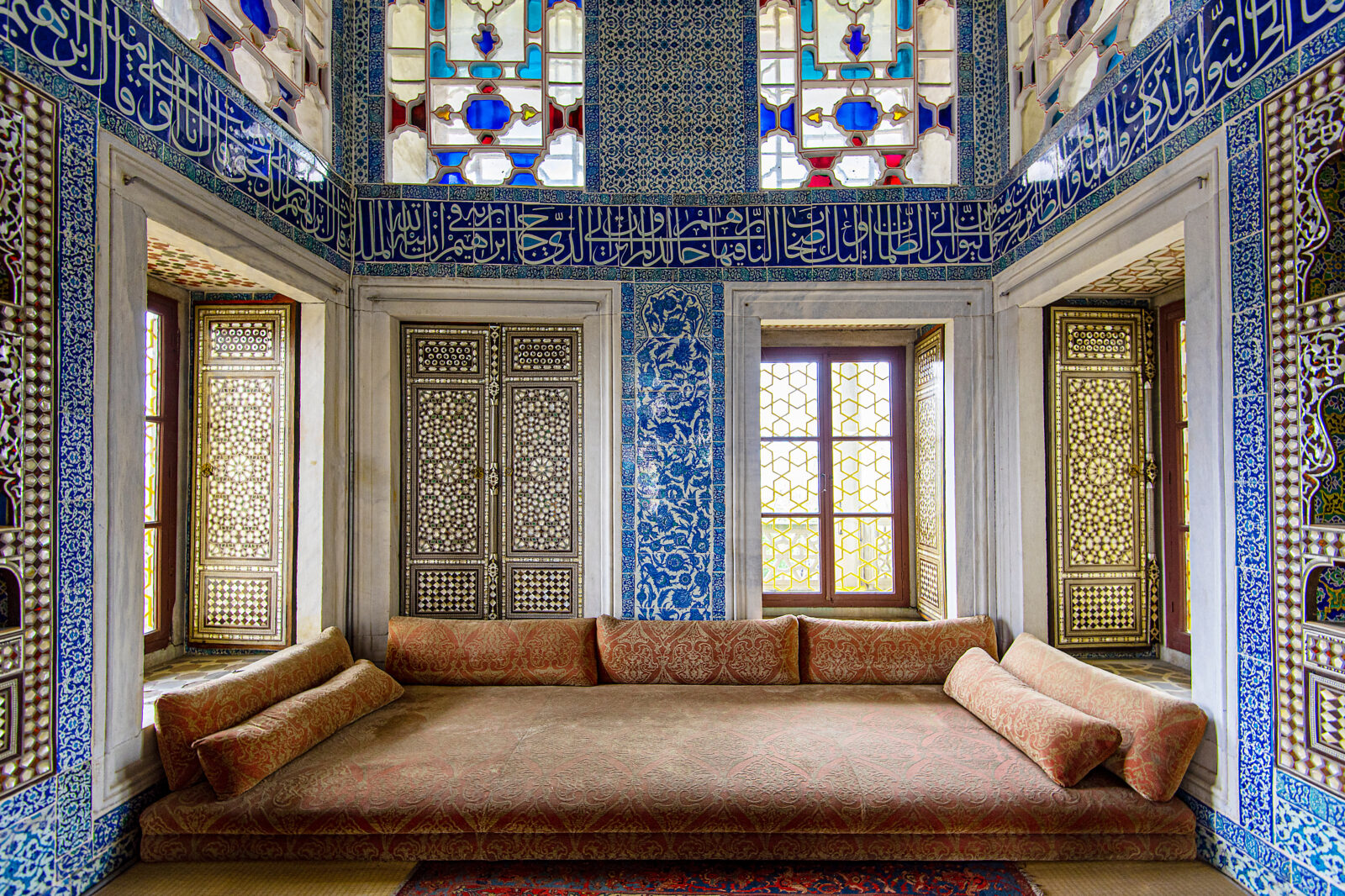
In the vast gardens of Topkapi Palace, an unusual method was used to illuminate the nights during grand celebrations and important events. Tortoises, slow-moving and steady, were equipped with candles on their backs and set loose in the palace gardens.
This method of lighting served a dual purpose: it created a magical ambiance with gentle, moving lights and symbolized the steady and enduring nature of the Ottoman Empire. The tortoises, carrying the flames on their backs, moved slowly through the gardens, casting flickering shadows on the intricate tile work and lush greenery.
This practice, though simple, reflected the creativity and symbolism embedded in Ottoman court life.
The sight of these tortoises, with their glowing burdens, added an enchanting element to the palace’s nocturnal landscape, turning the gardens into a scene of otherworldly beauty that left a lasting impression on those who witnessed it.
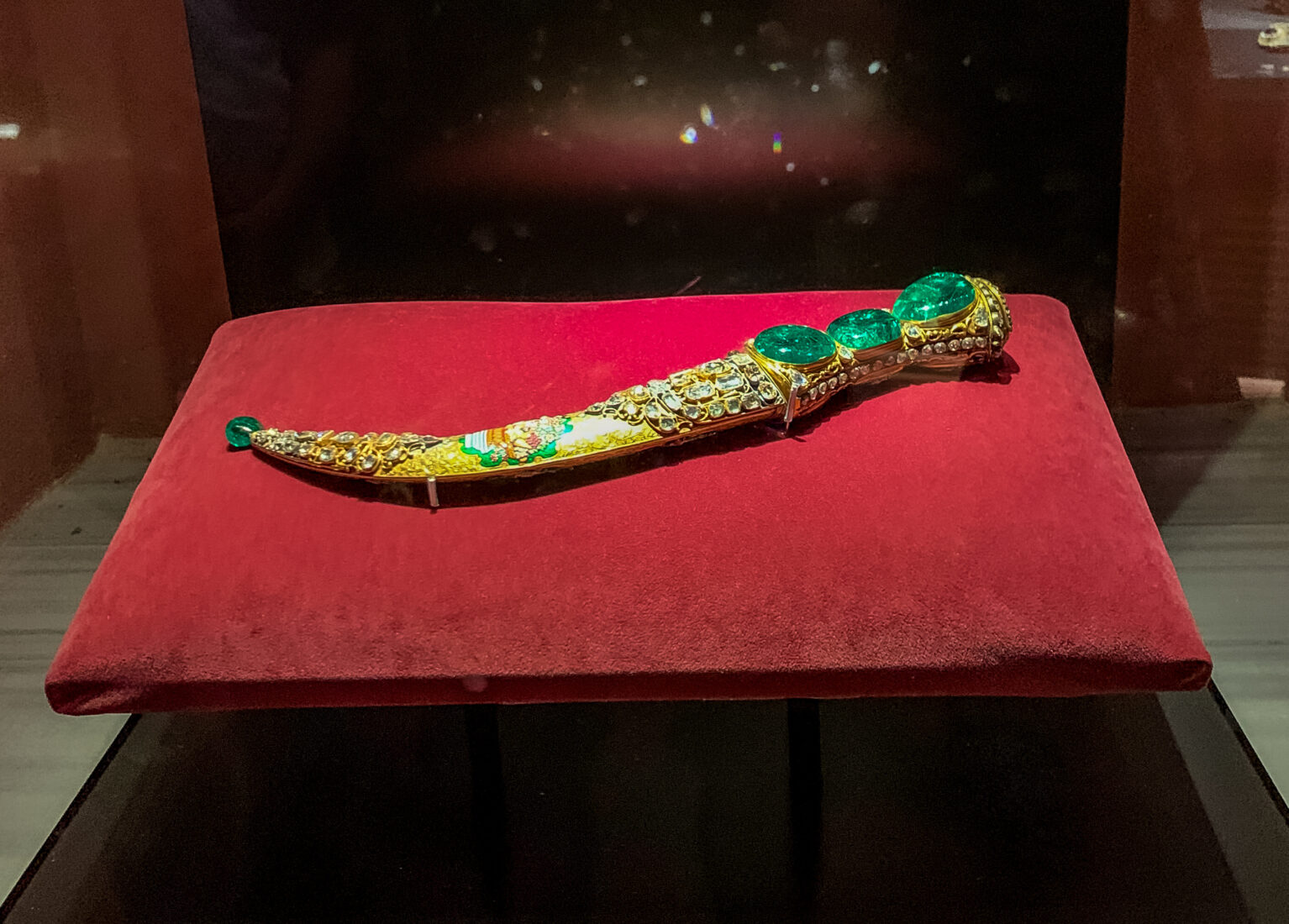
Among the treasures housed in Topkapi Palace, the Topkapi Dagger stands out not only for its opulence but also for its historical significance. This jewel-encrusted weapon was originally intended as a gift from Sultan Mahmud I to Nadir Shah of Persia.
However, due to the shah’s untimely death, the dagger never reached its intended recipient and instead became one of the most prized possessions of the Ottoman treasury. The dagger is adorned with three large emeralds, each set in gold and surrounded by smaller diamonds.
Its hilt and sheath are also covered in precious stones, making it a symbol of the empire’s wealth and craftsmanship. The Topkapi Dagger’s story is intertwined with the complex diplomatic relations between the Ottoman Empire and Persia, and it serves as a reminder of the political intrigue and alliances that shaped the region’s history.
Today, the dagger is displayed in the palace’s Treasury, where it continues to captivate visitors with its beauty and the story of its origins.
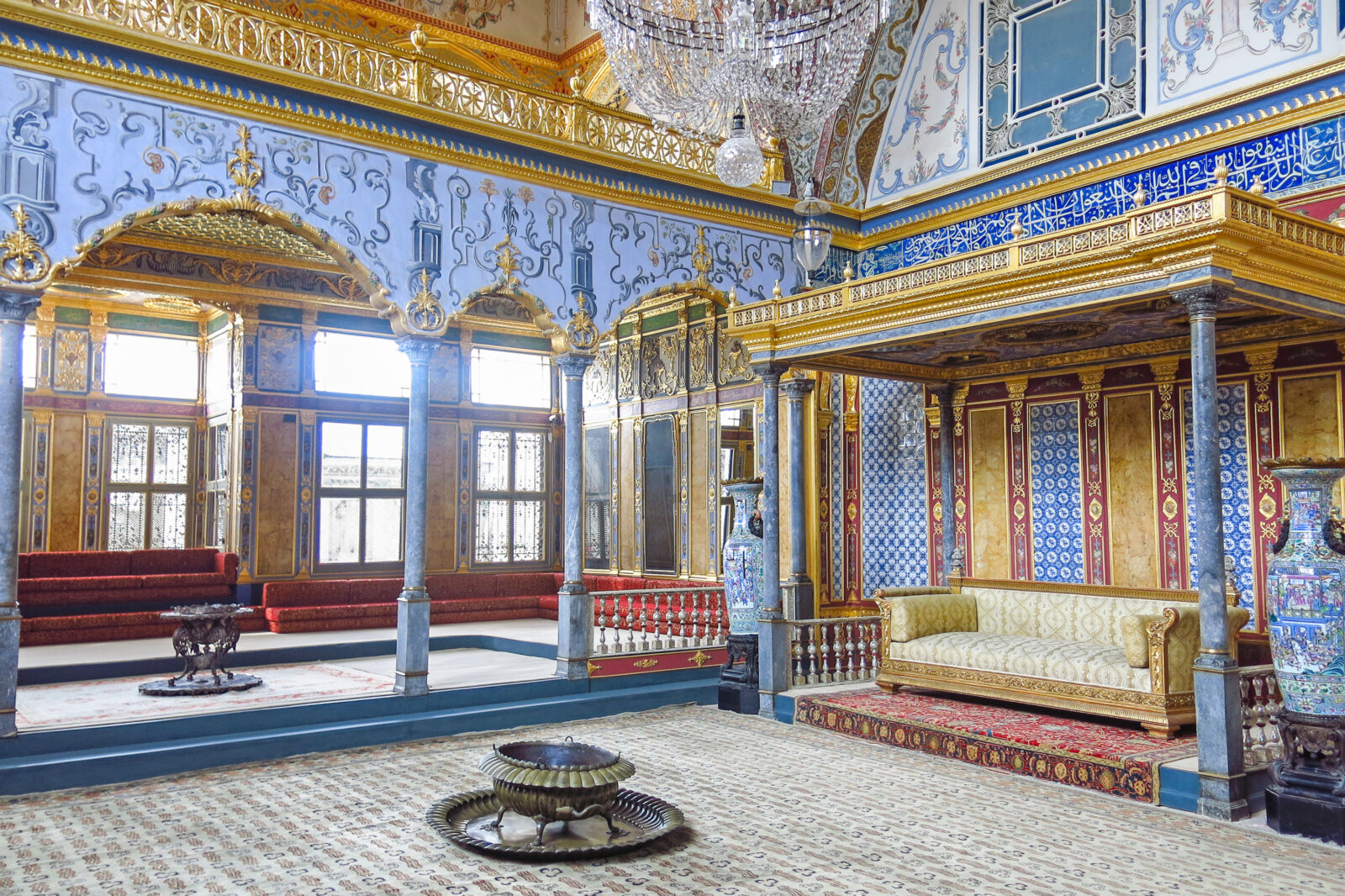
Topkapi Palace was the setting for many significant ceremonies, including the Sunnet (circumcision) ceremonies for the sons of the sultans. These events were grand affairs, lasting several days and involving elaborate preparations.
The palace grounds were transformed into a festival site, with decorations, entertainment, and feasts provided for the guests, who included high-ranking officials, foreign dignitaries, and prominent citizens.
The boys undergoing circumcision were dressed in special robes and paraded through the palace in a procession that symbolized their passage into manhood.
The ceremonies were not just personal milestones; they were public displays of the sultan’s wealth and power, reinforcing the empire’s traditions and religious values.
The circumcision room, known as the Sunnet Odasi, still exists in the palace today, offering a glimpse into the rituals that played a crucial role in the life of the Ottoman court.